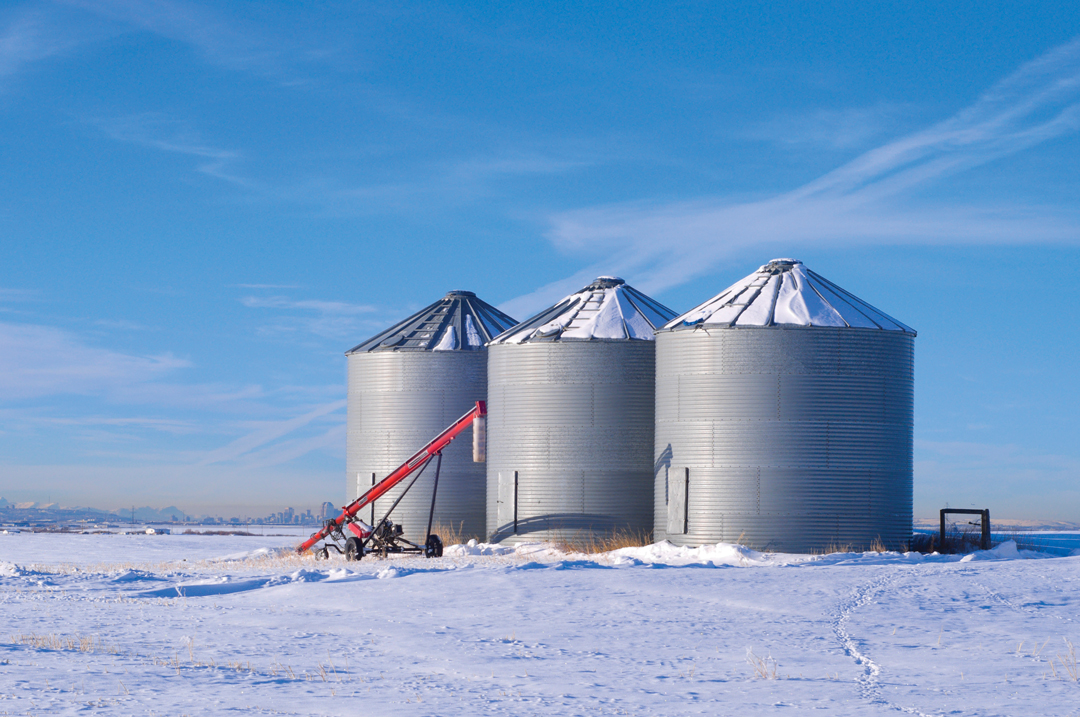DESIRABLE DIGITS
BY ELLEN PRUDEN • PHOTO COURTESY OF CEREALS CANADA
Understanding falling number (FN) in wheat can help farmers make informed decisions about harvest quality. The FN test measures the activity of the enzyme alpha-amylase in wheat. This activity is caused by pre-harvest sprouting. Wet field conditions at or near maturity can cause sprout damage. The kernels absorb moisture and germinate or sprout. Sprouting itself is subject to limits under the Canadian Grain Commission wheat grading process. Swelling or a visible sprout may appear in sprouted kernels. The bran may be split over the germ and/or the germ may be missing. A kernel is considered severely sprouted when the growth of the sprout extends past the normal contours of the germ.
A low FN is undesirable as it indicates high enzyme activity has broken down the starch content of the kernel. A high FN indicates low enzyme activity, which generally signals the wheat quality has not been compromised.
To measure FN, a wheat sample is ground and water is added to produce a slurry. In a test tube, a plunger is allowed to fall through the mixture. If the wheat starch has been broken down by enzyme activity, the mixture will not thicken well, and the plunger will fall quickly and produce a low FN. Wheat unaffected by sprouting will produce a thicker slurry, causing the plunger to fall slowly and results in a higher FN.
“During crop years that have wet harvest conditions, FN testing becomes a priority to ensure the quality and reputation of Canadian wheat is maintained,” said Elaine Sopiwnyk, Cereals Canada vice-president of technical services. “Consistently producing high quality wheat with a desirable falling number helps Canada build a good reputation with buyers and processors.”
Domestic and international millers and bakers naturally prefer wheat with a high FN because it produces high quality baked goods. Wheat with lower FN values may pose a challenge for exporters and millers, as it cannot be easily improved by blending with high quality wheat. FN is not a Canadian grading specification, but sprouted kernels are considered a grading factor. The tolerance for sprouted kernels depends on the wheat class and grade. For the benefit of end-product processors, milling companies may stipulate a specific FN in purchase contracts with exporters.
Flour derived from wheat with a low FN delivers poor baking results. For example, low-FN flour may darken pan bread, reduce loaf size, result in bread that is difficult to slice and may even create large and uneven holes in the slice.
The expert analytical team at Cereals Canada performs the FN test as part of its routine testing that includes its annual New Crop Harvest Assessment. “It is a critical test performed to assess wheat quality and the effects of sprout damage,” said Sopiwnyk. Results are shared with customers and buyers of Canadian wheat.
Claresholm farmer and Cereals Canada board member Dean Hubbard understands the importance of a consistent, high-quality grain supply to global customers. “Maintaining a high falling number in our wheat ensures we deliver top quality grain to our buyers, which then helps to keep our reputation strong in the market,” he said. Hubbard attended the 2023 New Wheat Crop Trade and Technical Mission that met with customers in Algeria, Morocco, Italy and the U.K. “I heard from customers how important quality is when it comes to wheat, and Canada grows some of the highest quality wheat in the world.”
Ellen Pruden is Cereals Canada director of communications.







Comments